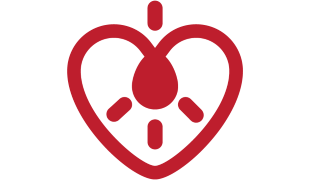- 5835
- 463
- 12
- 13
- 0
- Help Ukraine
About the solution
Karel was always asking for help to closing and opening his shirt. Suffering from Parkinson's Disease, his condition was getting worse as he was getting older, and his hands were shaking more and more.
Despite of his increasing physical limitations, the patient, who is over 80 years old, has a clear mind.
So Karel had the idea of using Velcro, which is also a cheap solution, to help him be more independent when he dresses himself. He asked his daughter Ria to replace all of his clothing buttons with Velcro.
Now he is able to close its "buttons" without help, positioning the ends of velcro one on top of the other.
It was also a solution that didn’t take much time to implement. Karel received very good feedback from the healthcare staff.
Adapted from: http://bit.ly/2nnpNmn
This solution shall not include mention to the use of drugs, chemicals or biologicals (including food); invasive devices; offensive, commercial or inherently dangerous content. This solution was not medically validated. Proceed with caution! If you have any doubts, please consult with a health professional.
DISCLAIMER: This story was written by someone who is not the author of the solution, therefore please be advised that, although it was written with the utmost respect for the innovation and the innovator, there can be some incorrect statements. If you find any errors please contact the patient Innovation team via info@patient-innovation.com
-
-
467
-
0
-
6557

CAPR-Style – Adaptive clothing for disabled people
CAREGIVING
(SELF)-CARE: DRESSING: Dressing independently.
Incontinence
Cerebral Palsy
Cervical spinal cord injury/Tetraplegia
Body-Worn solutions (Clothing, accessories, shoes, sensors...)
Strategy/Tip
Promoting self-management
Managing Neurological Disorders
Promoting inclusivity and social integration
Recovering from Traumatic Injuries
Preventing (Vaccination, Protection, Falls, Research/Mapping)
Caregiving Support
Medical Genetics
Neurology
Pediatrics
Rheumatology
United Kingdom
-
-
-
449
-
0
-
6440

Open back adaptive slacks (from slacks without elastic waist bands)
(SELF)-CARE: DRESSING: Dressing independently.
(SELF)-CARE: USING THE TOILET: Using the toilet independently
Amyotrophic Lateral Sclerosis
Body-Worn solutions (Clothing, accessories, shoes, sensors...)
Gait abnormalities (e.g., walking difficulties, unsteady gait)
Tremors
Muscle cramps or spasms
Difficulty coordinating movements
Stiffness or rigidity (difficulty moving)
Paralysis of the legs and lower body
Muscle weakness
Loss of balance
Trouble with fine motor skills (e.g., writing, buttoning clothes)
Numbness or tingling in the extremities
Twitching or involuntary movements (myoclonus)
Dizziness or lightheadedness
Fatigue
Restoring mobility
Promoting self-management
Rehabilitating After Stroke
Managing Neurological Disorders
Caregiving Support
General and Family Medicine
Internal Medicine
Neurology
Orthopedics
Pediatrics
Rheumatology
United States
-
-
-
552
-
0
-
7459

Slacks with zippers on both sides for patients who have to stand up in public
CAREGIVING
(SELF)-CARE: DRESSING: Dressing independently.
Amyotrophic Lateral Sclerosis
Strategy/Tip
Body-Worn solutions (Clothing, accessories, shoes, sensors...)
Tremors
Muscle cramps or spasms
Stiffness or rigidity (difficulty moving)
Muscle weakness
Trouble with fine motor skills (e.g., writing, buttoning clothes)
Sleep disturbances
Numbness or tingling in the extremities
Restoring mobility
Managing pain
Promoting self-management
Managing Neurological Disorders
Promoting inclusivity and social integration
Preventing (Vaccination, Protection, Falls, Research/Mapping)
Caregiving Support
General and Family Medicine
Medical Genetics
Medical Oncology
Neurology
Orthopedics
Physical Medicine and Rehabilitation
Rheumatology
United States
-
 en
en